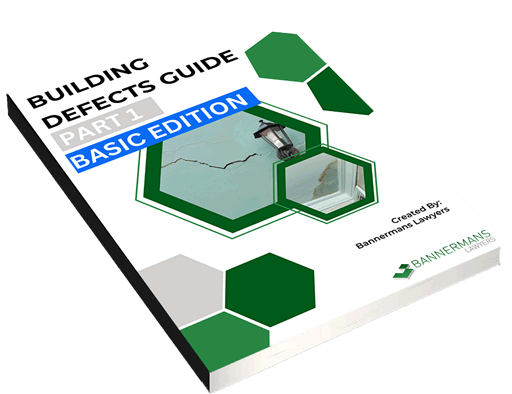What is a major and a minor defect? Who is responsible?
Posted 17 May 2024
Category: Building Defects, eBooks
What is a “major” defect?
“major defect” means-
- a defect in a major element of a building that is attributable to defective design, defective or faulty workmanship, defective materials, or a failure to comply with the structural performance requirements of the National Construction Code (or any combination of these), and that causes, or is likely to cause–
- the inability to inhabit or use the building (or part of the building) for its intended purpose, or
- the destruction of the building or any part of the building, or
- a threat of collapse of the building or any part of the building, or
- a defect of a kind that is prescribed by the regulations as a major defect, or
- the use of a building product (within the meaning of the Building Products (Safety) Act 2017 ) in contravention of that Act.
Note : The definition of “major defect” also applies for the purposes of section 103B (Period of cover).
“major element” of a building means-
- an internal or external load-bearing component of a building that is essential to the stability of the building, or any part of it (including but not limited to foundations and footings, floors, walls, roofs, columns and beams), or
- a fire safety system, or
- waterproofing, or
any other element that is prescribed by the regulations as a major element of a building.
What is a “minor” defect?
Unlike the definition of “major defect”, the Home Building Act 1989 (HBA) does not define the terms “minor defect” or “non-major defect”.
A non-major defect can be interpreted as defects that do not make the building uninhabitable or dangerous to live in. They are usually simple or cosmetic that affect how a lot or common property may look or function.
Non-major defects can include (but not limited to):
- Thin cracks;
- Corrosion;
- Blemishes;
- Wall dents;
- Uneven finishes;
- Functionality of fittings and fixtures; and General deterioration.
A non-major defect is any defect that is not a major defect.
Who is responsible?
During the statutory warranty period under the HBA, both the original builder and developer are jointly and severally liable to rectify the defect(s) at their own cost. A “developer” is defined under section 3A and is essentially the owner of the land at the time of the development.
Building Defects Advice
Strata committees & lot owners
***The information contained in this article is general information only and not legal advice. The currency, accuracy and completeness of this article (and its contents) should be checked by obtaining independent legal advice before you take any action or otherwise rely upon its contents in any way.

This is an extract from our Bannermans Building Defects Guide – Part 1.
To access more FAQ'S on Building Defects fill in the below form to download our Bannermans Building Defects Guide – Part 1 for free.

